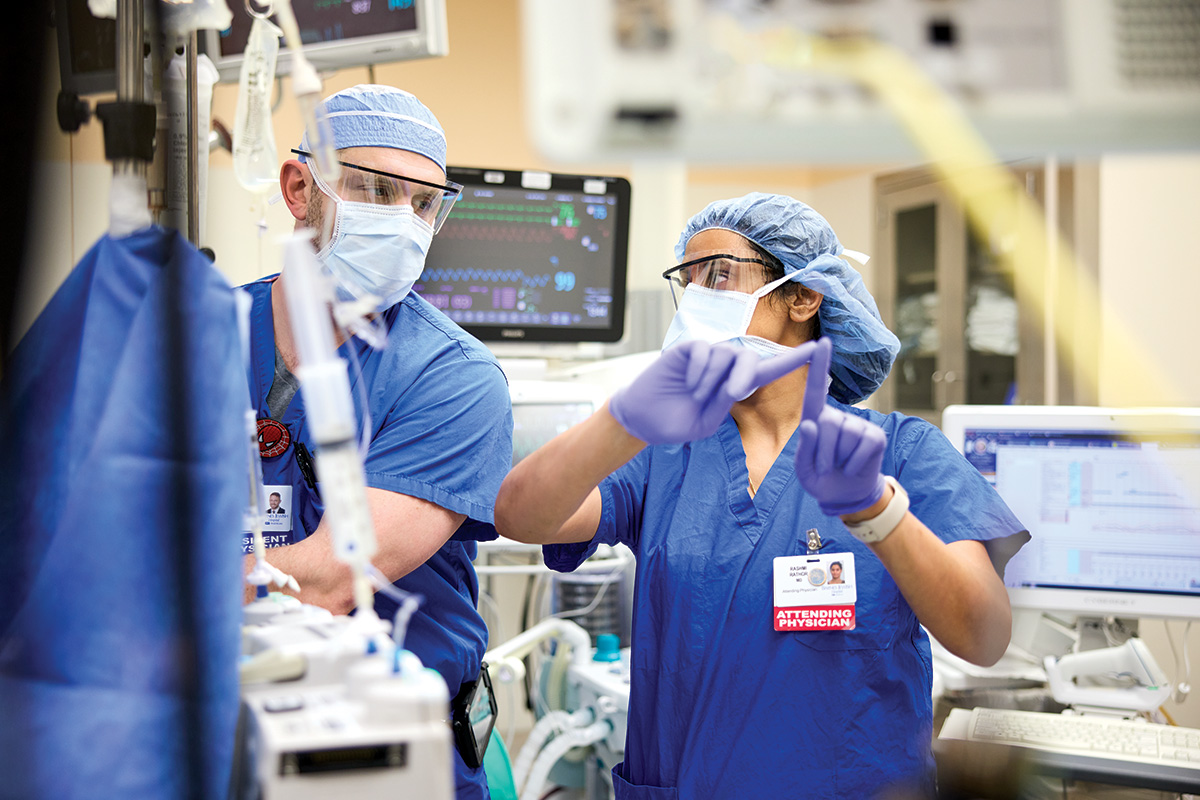
Linda, to her knowledge, had never been treated with a cephalosporin antibiotic. The 64-year-old could recall a childhood rash her pediatrician had chalked up to “a funny reaction” to penicillin, but as far as she was concerned, she had no known allergies. The day of her surgery, as the Barnes-Jewish Hospital (BJH) operating room team ran through its preoperative checklist, Linda affirmed that she had no known drug allergies. The cephalosporin was administered through the intravenous line.
Minutes later, Linda’s nurse anesthetist spotted a message notification in the electronic medical record from clinicians in the Anesthesiology Control Tower (ACT). The message included an alert that Linda might be at risk for anaphylaxis, a severe allergic reaction.
Sitting buildings away in the ACT, anesthesia clinicians — including an anesthesiologist, a nurse anesthetist, a research specialist, a resident and a student registered nurse anesthetist — remotely monitored BJH operating room (OR) patients. They took the anesthetist’s call and informed him that Linda’s vital signs, coupled with a history of allergic reactions to some antibiotic types, could be consistent with an evolving allergic reaction to the cephalosporin she had received.
Linda’s blood pressure was dropping, and all were worried that she might be experiencing an allergic reaction, with a risk of developing life-threatening anaphylactic shock.
The anesthetist halted the surgery and immediately initiated appropriate, lifesaving treatments for anaphylaxis. Concurrently, the ACT clinicians contacted the rapid-response “firefighter” anesthesiology resident, who was immediately available to provide assistance in the OR where Linda was experiencing the complication.
During emergency situations, the ACT is there to support clinicians in the OR, marshaling an array of on-the-ground resources to assist. Often, this will include a seasoned anesthesiologist.
For the past six years, the ACT has provided a watchful eye over 60 operating rooms at Barnes-Jewish Hospital, serving nearly 1,000 patients per week. Like the air traffic control tower (the aviation analog that inspired this initiative), the ACT provides additional sets of eyes to help anesthesia clinicians head off and troubleshoot rare but potentially life-threatening perioperative events that can occur unpredictably.
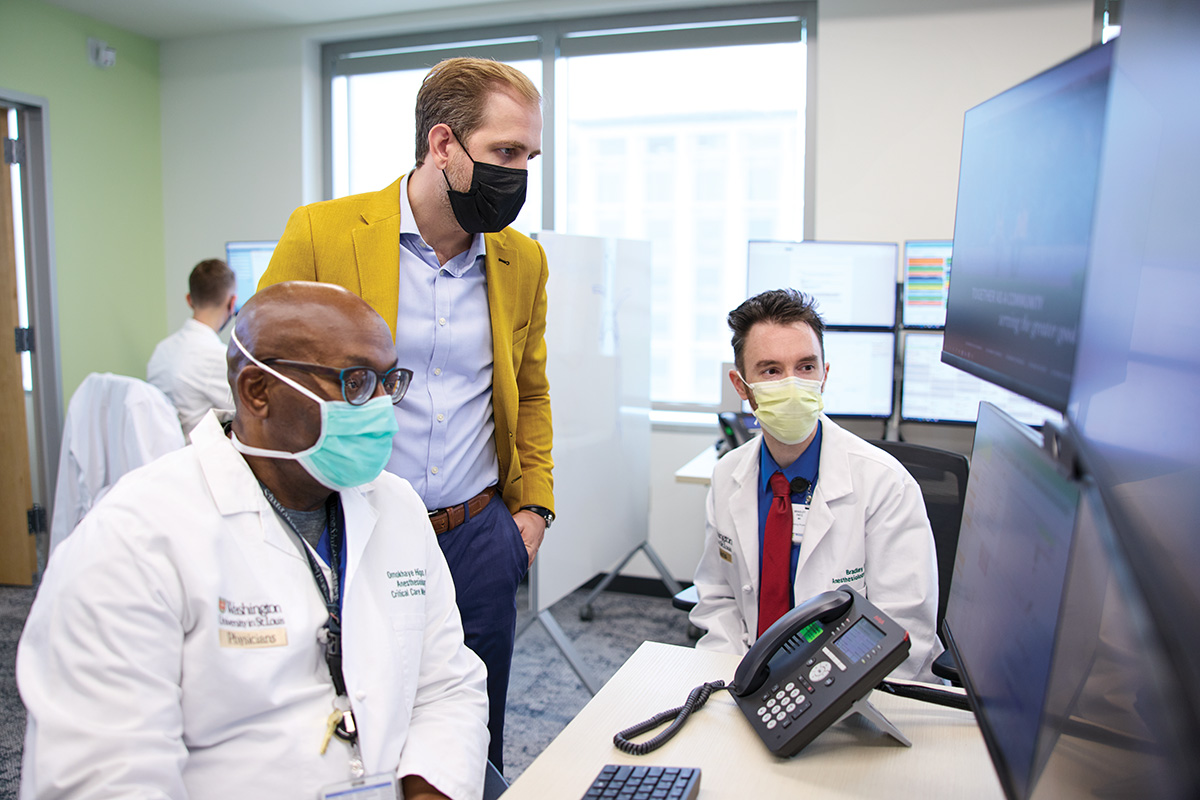
“With vulnerable patients in many operating rooms and recovery areas, it would be incredibly helpful to be able to remotely detect evolving patient complications, which might not always be detected as early by clinicians in the trenches,” said Michael S. Avidan, MBBCh, the head of the Department of Anesthesiology at the School of Medicine and anesthesiologist-in-chief at BJH.
This year, the ACT was expanded into the Perioperative Innovation Center. Located on the 12th floor of the Northwest Tower, the center serves as WashU’s hub for new initiatives in anesthesiology telehealth. It houses the ACT and its related evolving program, the Recovery Control Tower, and provides a physical space for innovators to collaborate. The center examines pressing questions in the field of anesthesiology, including how to efficiently deliver quality care as national surgical demand massively increases and the shortage of anesthesia clinicians rapidly worsens. ACT innovators investigate potential solutions to perioperative challenges. The control tower initiative augments perioperative care and enhances patient safety in real time.
“One of the goals of the ACT is to marshal the correct personnel and resources when unexpected events arise,” said Thaddeus Budelier, MD, program manager for the Perioperative Innovation Center. “For example, with coordination from the Perioperative Innovation Center, an anesthesia clinician trained to manage complex cardiac disease can be promptly dispatched to noncardiac ORs to perform an echocardiogram, sometimes before a cardiac complication even occurs.”
Although anesthesiology care has evolved into a highly precise science that yields prompt responses to an array of potential perioperative complications, some events remain unforeseen. Recent national studies have shown that up to one-fifth of surgical cases feature nonroutine anesthesia events, of which more than 12% are associated with patient injury. Examples of nonroutine events include delays in measuring blood pressure, checking blood glucose or administering blood products.
“Fields like anesthesiology and critical care are ripe for technological innovations to enhance the work of clinicians.”
— Michael S. Avidan, MBBCh
With the aim of creating a state-of-the-art early warning system, the ACT is harnessing the power of machine learning to detect negative trends in patients’ trajectories before they evolve into medical emergencies. “Fields like anesthesiology and critical care are ripe for technological innovations to enhance the work of clinicians,” said Avidan, also the Dr. Seymour and Rose T. Brown Professor and a leader in perioperative outcomes research. “There are so many data elements that need to be considered in real time when making critical clinical decisions. Technological augmentation has the potential to improve safety and quality of care for vulnerable patients in complex clinical settings.”
Collective expertise
The ACT team concentrates on the real-time data stream from monitors in the ORs, identifying potential risks to patients and considering what measures might be taken to optimize outcomes. It actively assesses rapidly changing physiological measurements, including blood pressure, heart rate, temperature, the brain’s electrical activity and other vital signs that anesthesia clinicians monitor during surgeries.
Customized software and the team’s collective clinical expertise allow it to home in on issues that may arise in a way that might be difficult to track for in-the-trenches anesthesia clinicians, who face a dizzying number of updates throughout a case. OR clinicians, for example, might need to call for a blood transfusion to be prepped, adjust the administration of anesthesia medications and manage intraoperative antibiotics, all while communicating with the surgery team, charting and deciphering the information overload from thousands of beeps and dozens of readings.
Caring for the sickest of the sick is often far from routine. Barnes-Jewish Hospital stands as the largest hospital in Missouri, regularly ranking among the top hospitals in the country, and the renowned School of Medicine faculty tackles complex cases from all over the world. Leaders view the ACT as an opportunity to enhance care even further. Washington University leads the push on this front, as the ACT is believed to be the first initiative to combine remote monitoring, telemedicine and machine learning to improve the safety and quality of perioperative care.
The ACT typically contacts ORs 30 to 50 times a day, either through the electronic medical record, or by texting or calling the anesthesia clinician. Most contacts involve simple nudges and reminders to further personalize care, such as if a patient with a rare heart condition requires close heart rate or blood pressure monitoring.
When a patient’s status takes a marked turn for the worse, the ACT is either alerted from the monitoring data or called directly. For very rare scenarios that an anesthesia clinician may never have encountered, the team might help synthesize the most current literature and advise on evidence-based management. Sometimes the ACT can act as a sounding board when a clinician has to weigh different management options.
The ACT has on occasion been able to provide just-in-time assistance, even before difficulties arise. “I’ve had the firefighter come into my room before a complication happened, just to say, ‘Hey do you need help? The control tower alerted us,’” said Bernadette Henrichs, PhD, professor of anesthesiology and director of CRNA Education and Research in the anesthesiology department. “It was a big relief. I didn’t even have time to make the phone call and say we needed more help.”
Powering advances in care
The origins of telehealth for the most vulnerable patients in the hospital trace back to early success monitoring patients in the intensive care unit. Washington University became one of the early institutions to show the effectiveness of off-site telehealth monitoring of ICU patients, often called the eICU.
Spurred by the eICU’s success, Avidan began adapting the concept to perioperative care. After a year of planning the first pilots, the ACT started in 2016 through a series of studies on forecasting algorithms, feedback alerts and feasibility assessments to support translation of the approach, all falling under different phases of the moniker ACTFAST. An important project goal is to develop computer algorithms that may be able to identify patterns suggesting that patients are at risk for specific complications, such as heart attack, respiratory failure, or death. That aspect of the ACTFAST studies includes colleagues from the Department of Computer Science & Engineering.
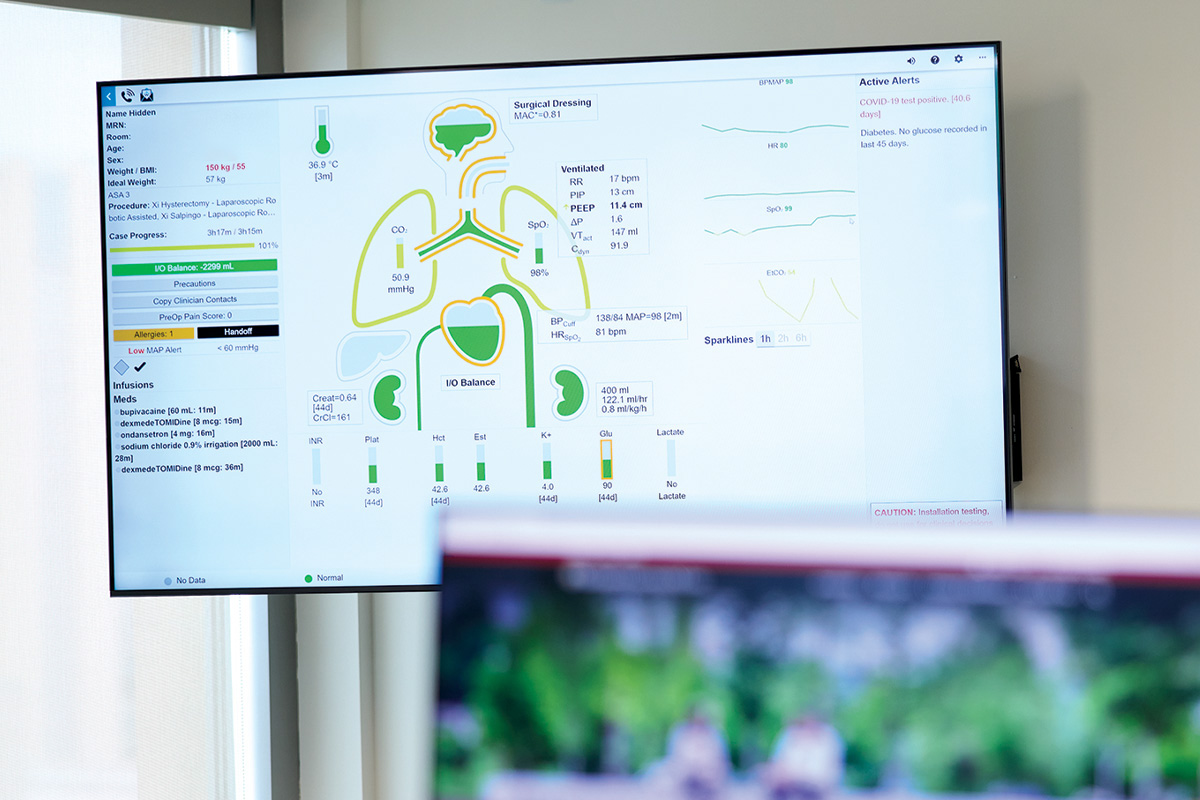
The original ACTFAST studies garnered nearly $1 million in grants from the Agency for Healthcare Research and Quality and the National Science Foundation. The group’s current project, The Telemedicine Control Tower for the Operating Room: Navigating Information, Care and Safety (TECTONICS) study, has been funded by a multi-year grant totaling more than $2.5 million from the National Institute of Nursing Research. The study is on pace to enroll 10,000 patients per year.
A large number of patients is needed to evaluate the ACT’s impact via metrics on quality of care and postoperative outcomes. One challenge the ACT is tackling is how to predict which patients are most likely to develop a kidney injury related to patient risk factors and other surgery and anesthesiology care issues. Postoperative kidney injury is relatively common; an estimated 13% of patients receiving open abdominal surgery and 25% of patients receiving cardiac surgery experience some reduction in kidney function postoperatively.
The reasons can be manifold, nebulous and unpredictable, ranging from a transient drop in blood pressure while the patient is transferred from the operating table to the stretcher, to a previously unknown interaction between medications. Sifting through the mountains of perioperative data to find early warning signs is something for which machine learning is particularly well suited.
“AI has the power to advance preoperative risk stratification and improve clinical decision support tools to assist with early diagnosis of adverse events and streamlining workflows,” said Omokhaye M. Higo, MD, MBA, inaugural vice chair for innovation in the Department of Anesthesiology. “Our slate of projects ranges from reducing inefficiencies in OR scheduling and turnaround times to improving patient preparation, expectations and experience.”
Beyond South Campus
One major hurdle in incorporating the ACT has been changing the paradigm: introducing the concept of complementary telehealth into the OR environment, which historically has relied exclusively on those clinicians physically present to participate in all aspects of perioperative care.
Though the ACT provides an extra layer of safety to identify patient risks, initially some clinicians were skeptical of the idea. But, for the majority, the ACT has become a valuable backup. “Most of the skepticism has evaporated over time as clinicians have perceived that innovation and technology are not threats, but rather enhancements,” Avidan said. “The conceptualization of our Perioperative Innovation Center is more akin to ‘phone a friend’ than it is to a sinister ‘big brother.’”
The team is continuing to fine-tune the system and improve its capabilities. “We are currently working on implementation strategies to ensure that the ACT is a sustainable, innovative clinical enterprise, beyond research,” said Joanna Abraham, PhD, associate professor of anesthesiology and a member of the Institute for Informatics, who studies perioperative telehealth workflows and machine learning implementation.
In 2020, work began on the ACT’s complementary initiative, the Recovery Control Tower, which monitors patients after surgery in the Post-Anesthesia Care Unit, or PACU, to help the unit run more efficiently. The project is concluding its initial pilot on two PACU bays.
While clinicians in the Recovery Control Tower monitor patients for emerging issues, they also provide an additional function: communicating with patients directly. Using cameras in patient bays, clinicians can gather patient histories, check vitals and even coordinate discharge remotely, preventing delays by tending to patients as soon as they’re ready to leave the hospital.
Higo said he hopes the tools developed by the Perioperative Innovation Center will boost the care and efficiencies beyond St. Louis, especially in rural communities that may lack the training and expertise to treat highly complex patients.
“Advances in medicine and an aging population give us opportunities to care for patients with more complex clinical conditions than ever before,” Higo said. “If you couple that with ongoing workforce shortages of anesthesia clinicians and other adverse effects of the pandemic, we are heading into strong headwinds.
“The center prepares us for this by continuing to develop systems that leverage our collective clinical expertise and digital platforms, enabling us to do what we currently do better while finding innovative ways to address and overcome whatever the future brings.”
Published in the Winter 2022-23 issue





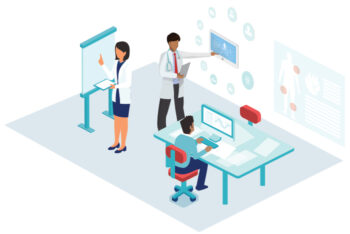
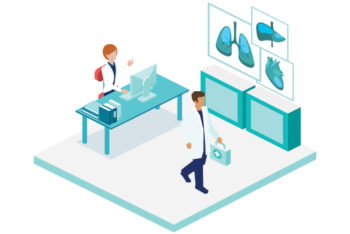
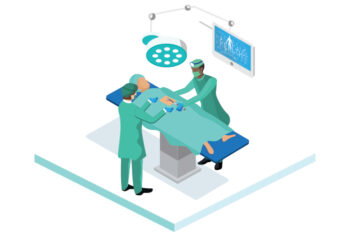
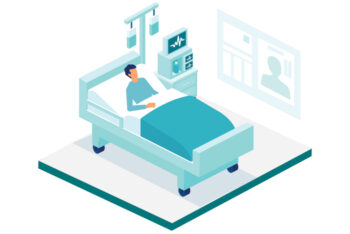
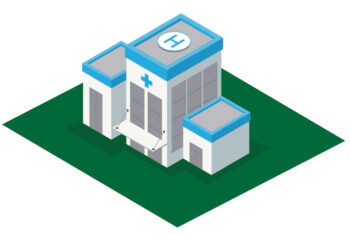
 Share
Share Tweet
Tweet Email
Email